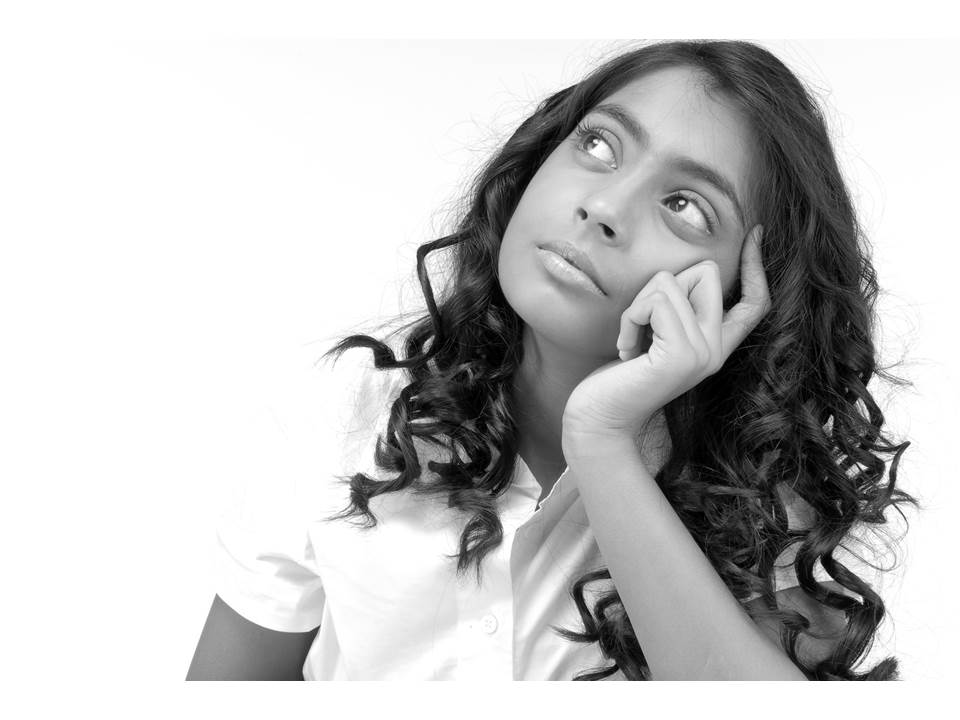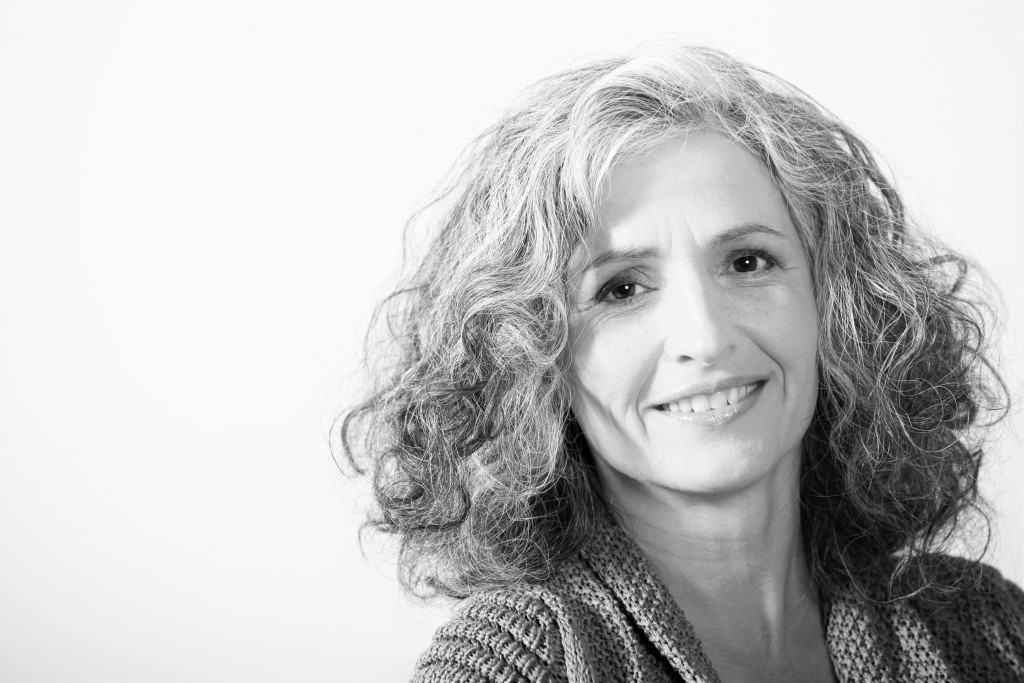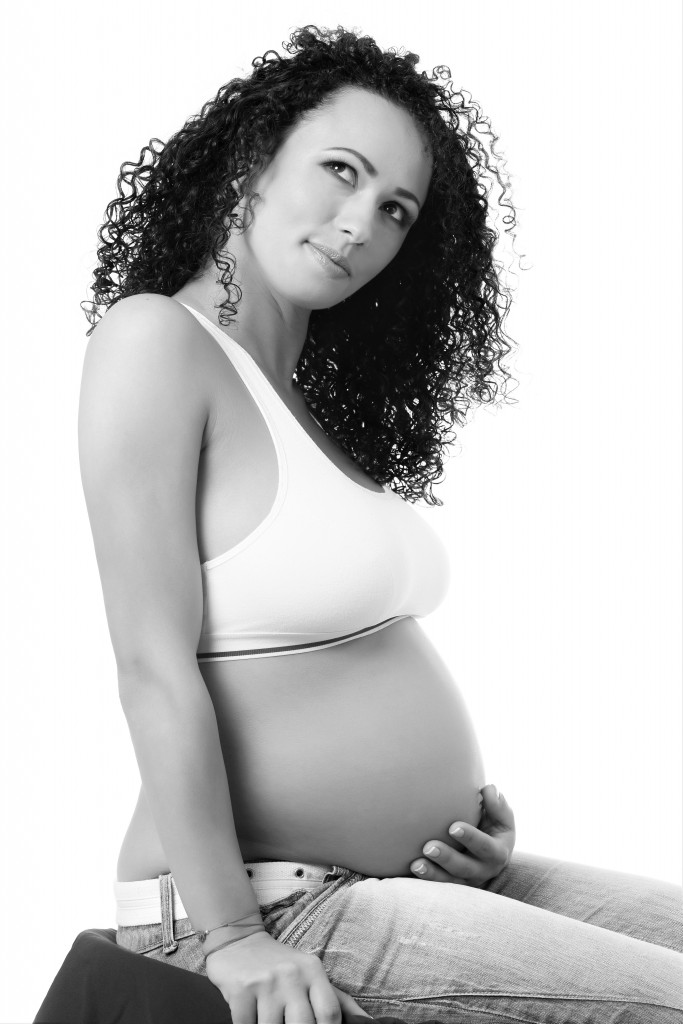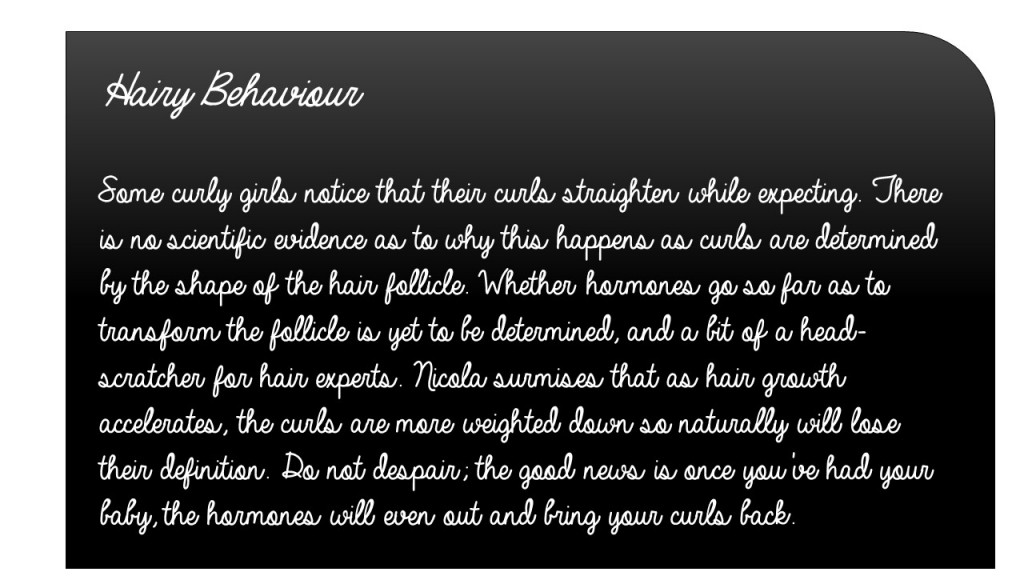Ever notice that no matter how rigidly you keep to your styling routine, your curls never come out the same? It’s the mane reason women hate curls. But we shouldn’t blame ourselves, because a hair disaster might have something to do with our hormones. I got talking to trichologist and hair afficionada, Nicola Smart, about what exactly is going on with our curls at different stages of our lives and how best to tailor our regime to get the best out of them.
Puberty: Teenage kinks
 A child’s hair starts out light and finely textured. However as they enter puberty, a group of hormones called androgens (responsible for growth and development of the male reproductive system) causes a whole host of bodily changes. Cue god awful acne, moodiness and the start of our shaving/waxing days, i.e. the emergence of darker, coarser and longer hair under our armpits, on legs etc.
A child’s hair starts out light and finely textured. However as they enter puberty, a group of hormones called androgens (responsible for growth and development of the male reproductive system) causes a whole host of bodily changes. Cue god awful acne, moodiness and the start of our shaving/waxing days, i.e. the emergence of darker, coarser and longer hair under our armpits, on legs etc.
Nicola explains: “These adult hairs actually have a slightly different follicular structure to pre-pubertal hairs and sit in a more shallow area within the skin. In addition to the stronger and longer hairs, adolescents may notice an increase in sebum production, the body’s natural lubricant, resulting in ‘greasy’ hair and skin”.
Washing your hair more frequently can negate ‘greasy’ looking hair but if your hair is curly you’ll probably be thankful for nature’s moisture which is said to be at its peak during puberty. Nicola says: “I’d suggest curly heads stick with moisturising shampoos and conditioners as the increased moisture should help to define and create more uniform curls”.
Monthly Cycle: Your curls will go hormonal PERIOD!
Just as our time of the month affects our moods, skin and food cravings it has a significant role in how our hair behaves. It is what characterises our curls on a day-to-day basis. And there is nothing we can do about it. No matter whether we’re a 4C or a 2A, the changes are distinct. The only factor that makes a difference is whether we have naturally thin, dry, oily or thick hair.
A good hair day
Ovulation, our most fertile period, is caused by a rise in female sex hormone oestrogen and so provides the perfect biochemical setting for a luscious head of curls. I for one think it’s our bodies’ way of making us more attractive to find a mate – I mean in effect we are in season at this point right? Anyway when it comes to haircare, Nicola assures there is very little we need to do here. Those with dryer textures notice more shine due to an increase in sebum production. Those with oily manes might feel their hair is a bit lank. In that case, washing it a tad more often will keep those greasy levels in check.
Ovulation, our most fertile period, is caused by a rise in female sex hormone oestrogen and so provides the perfect biochemical setting for a luscious head of curls. I for one think it’s our bodies’ way of making us more attractive to find a mate – I mean in effect we are in season at this point right?
A bad hair day
Day one of your menstrual cycle, i.e. the first day we bleed, sees a fall in oestrogen and progesterone. Therefore, as I have noticed, curls tend to be less voluminous and defined. The drop in oestrogen causes a decrease in sebum production. So for typically dryer hair this is bad news. Ensure you ramp up the moisturising routines (conditioning and steaming). Alongside the drop in oestrogen, we are losing ferritin (iron) through bleeding so hair will feel more brittle and weak. Fortifying our locks through oiling (Vatika coconut oil, argan and almond oil are great options) during this time of our cycle will compensate for what our hormones deny.
FOOD FOR THOUGHT
One thing Nicola stresses is that an overall healthy diet safeguards hair from the effects of hormonal change. Factor in foods such as eggs, oily fish, green leafy vegetables and protein-rich meat (or alternatives) to set a good foundation for curls that can better withstand the inevitability of ageing as well as chemical changes going on in our body. By contrast leave out sugars and refined carbohydrates such as white bread, pasta, and rice. If you have a sweet tooth replace sugary snacks with fruits and nuts.
Pregnancy: The Mane Event
Women often remark on how especially full and thick their hair feels while they are expecting. The reason is obvious; as you progress in your pregnancy your body is flooded with increased levels of oestrogen – that hair-friendly hormone. It contributes to that all-round healthy glow and as far as hair is concerned it’s the golden age for growth and a flawless look!
A good hair day
The rise in oestrogen levels prolongs hair’s anagen phase – the period of hair growth that normally lasts about 30 days. This is the time where we will experience minimal hair loss and ultra-lustrous locks! When it comes to your styling routine Nicola says less is more! In fact taking in healthy foods is enough assurance that our curls stay healthy. One point to watch out for is morning sickness. Frequent purging will divert nutrients from being absorbed in to the body. This could affect the hair follicle so ensure you compensate for the loss and eat well let alone more! If you experience severe hair loss during pregnancy seek GP advice.
A bad hair day
…normally we lose 10% of our hair whereas women post-partum will lose up to 40%…
The story however changes once you’ve given birth. In the first few months after delivering you will notice a lot of hair fall and depending on the level of trauma you undergo in delivering your baby, it might be more pronounced. Nicola attributes this to our hormones getting back to normal and in doing so our hair quickly moves into what was a dormant telogen phase (the period of shedding). It looks like a lot, normally we lose 10% of our hair whereas women post-partum will lose up to 40%, but Nicola assures that it’s compensating for the increased amount of hair growth during pregnancy. In addition to hair fall, your curls probably won’t feel as rich nor luscious. This is a result of the change in hormones and if you are breastfeeding, much of your remaining nutrient stores will be redirected to your baby. Eating well throughout this time will be the best way to maintain a healthy head of hair.
Menopause: It’s not just a hormonal thing!

As we advance in our years our hair contends with not only erratic hormonal changes but also the process of ageing. This is most acutely felt during the menopause, which usually affects women in their 50s for about 5-6 years. It comes with an array of side effects- hot flashes, fatigue etc. Our ovaries start to slow down the production of oestrogen thus exposing your follicles to testosterone which can cause an imbalance in your system. As a result our period becomes more irregular and with ageing we start to become more sensitive to testosterone and sebum production takes a nosedive. It’s a completely natural process but requires the most rigorous hair care routine.
Not the best hair days:
For our curls, regrowth is a longer process and hair density becomes less. During this fragile time in our hair’s life, we need to follow a two-prong defense strategy. As we age, we need to preserve our hair’s strength. So in colder climates, Nicola recommends we wrap our hair in a silk scarf. The soft material shields hair from the harsh dryness in the air while still allowing our scalp and hair to breathe. Also introduce more moisturising techniques such as steaming and up the frequency of deep conditioning. This will keep brittle curls happy. Be just as vigilant in the warmer climates. As the sun ages skin, it also affects your curls so keep yourself hydrated, wear a hat outdoors for protection against degradation.







No Comments